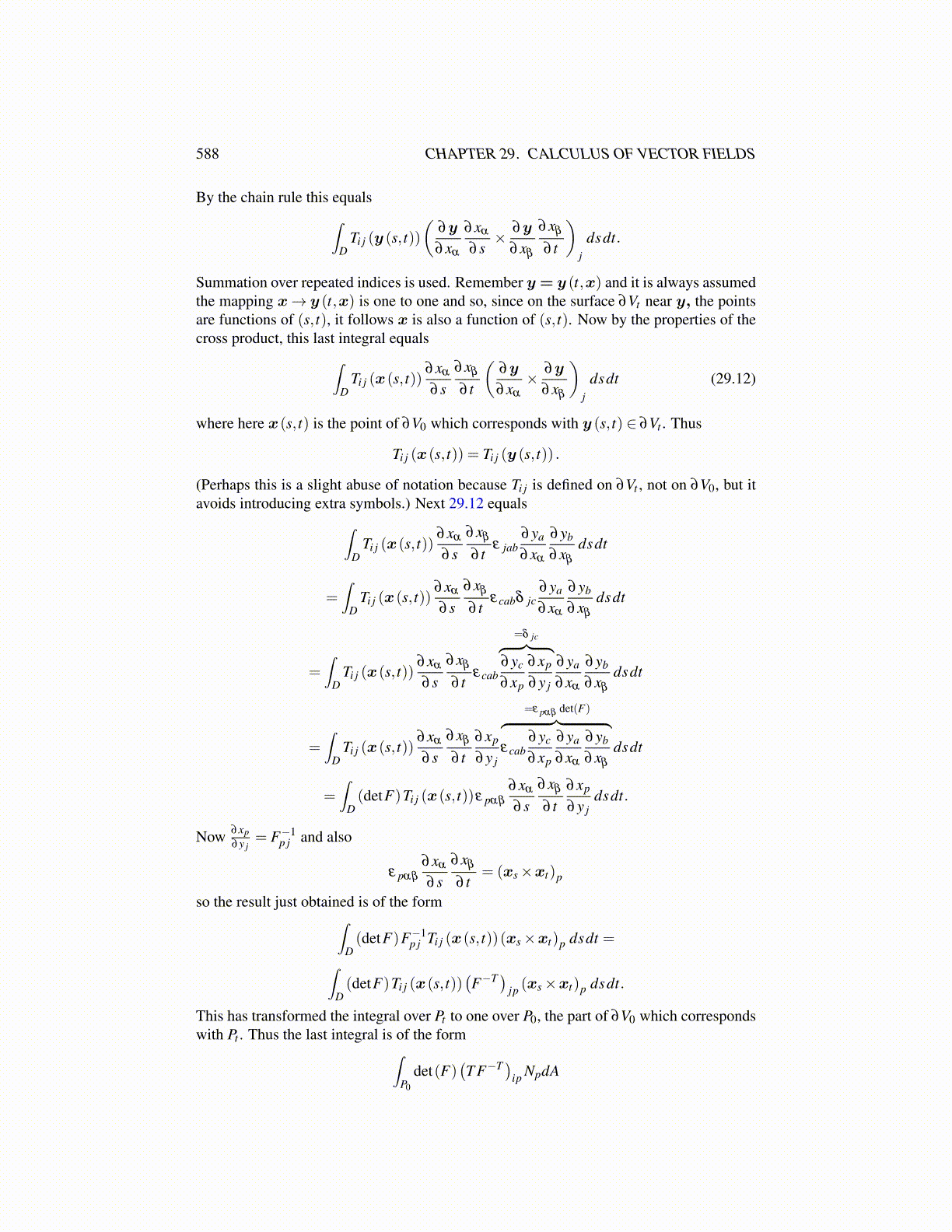
588 CHAPTER 29. CALCULUS OF VECTOR FIELDS
The wave equation is utt − c∆u = 0 and so the above gives three wave equations, one foreach component.
29.4.9 A Negative Observation
Many of the above applications of the divergence theorem are based on the assumption thatmatter is continuously distributed in a way that the above arguments are correct. In otherwords, a continuum. However, there is no such thing as a continuum. It has been knownfor some time now that matter is composed of atoms. It is not continuously distributedthrough some region of space as it is in the above. Apologists for this contradiction withreality sometimes say to consider enough of the material in question that it is reasonableto think of it as a continuum. This mystical reasoning is then violated as soon as theygo from the integral form of the balance laws to the differential equations expressing thetraditional formulation of these laws. See Problem 10 below, for example. However, theselaws continue to be used and seem to lead to useful physical models which have valuein predicting the behavior of physical systems. This is what justifies their use, not anyfundamental truth.
29.4.10 Volumes of Balls in Rn
Recall, B(x,r) denotes the set of all y ∈ Rn such that |y−x| < r. By the change ofvariables formula for multiple integrals or simple geometric reasoning, all balls of radius rhave the same volume. Furthermore, simple reasoning or change of variables formula willshow that the volume of the ball of radius r equals αnrn where αn will denote the volume ofthe unit ball in Rn. With the divergence theorem, it is now easy to give a simple relationshipbetween the surface area of the ball of radius r and the volume. By the divergence theorem,
∫B(0,r)
divx dx =∫
∂B(0,r)x· x|x|
dA
because the unit outward normal on ∂B(0,r) is x|x| . Therefore, denoting A(∂B) as the area
of ∂B,
nαnrn = rA(∂B(0,r))
and so
A(∂B(0,r)) = nαnrn−1.
You recall the surface area of S2 ≡{x ∈ R3 : |x|= r
}is given by 4πr2 while the volume
of the ball, B(0,r) is 43 πr3. This follows the above pattern. You just take the derivative
with respect to the radius of the volume of the ball of radius r to get the area of the surfaceof this ball. Let ωn denote the area of the sphere Sn−1 = {x ∈ Rn : |x|= 1}. I just showedthat ωn = nαn.
I want to find αn now and also to get a relationship between ωn and ωn−1. Considerthe following picture of the ball of radius ρ seen on the side.